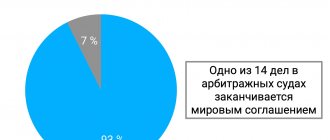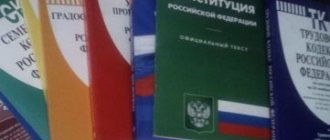The imposition of interim measures when applying to a civil court is in most cases necessary, since it guarantees the plaintiff to satisfy his property claims.
After all, he has to worry about whether the defendant will be able to reimburse the expenses caused by his actions. Will recovery become impossible due to the fact that the property, the right to which is being disputed, will pass to another owner.
Unfortunately, quite often there are cases where, intentionally or not, the defendant becomes insolvent.
Interim measures - a guarantee of securing a claim
The Institute of Interim Measures is called upon to rectify the situation. This procedure includes a whole range of actions that can guarantee the protection of the rights of the plaintiff in the event that the claim is satisfied and the execution of the court decision comes into question.
That is why security is a guarantee of the possibility, for example, of fulfilling the requirements set out in the statement of claim for the collection of alimony.
However, the law does not provide for restrictions on the imposition of encumbrances on property depending on the composition of the claims.
They can be used when presenting monetary claims and in the case of applications for recognition of rights. For example, when filing a claim for division of property.
What are the types of interim measures for a claim?
In civil proceedings, during proceedings between individuals, the following interim measures of claim :
- imposition of interim measures of claim on a car, real estate and bank accounts.
In the case of a car, when selling it, the new owner simply will not be able to register it, since the Court will impose a ban on registering it with the traffic police.
- It is also easy to impose a ban on real estate - the registration authority will not be able to conduct a transaction with such real estate.
- To freeze bank accounts, the plaintiff must indicate the specific bank in which the account is held.
- Securities and shares in companies can also be sold in order to hide such property.
- Also, an interim measure of a claim may be a ban on taking any actions. Often this is a ban on the defendant leaving the country.
- In accordance with the Civil Procedure Code, the defendant has the right to demand compensation from the plaintiff for losses incurred due to the imposition of interim measures of action . For example, if the latter failed in a deal to sell securities, on which a ban on alienation was imposed by a court ruling.
Types of interim measures
Measures to ensure a claim may not always be the same; depending on what exactly they will guarantee, the law distinguishes several types.
- Prohibition to dispose of property . This encumbrance has a name that reflects its essence - seizure of property. In this case, this property may be owned by both the defendant and other persons.
- Prohibition to perform certain actions . When imposing such orders, it is clearly formulated exactly what actions the defendant must not perform.
- Prohibition of certain actions in relation to property . Such measures are highlighted as a separate type, since they are addressed not to the defendant, but to other persons. The property in respect of which the prohibition applies must be the subject of the dispute.
We recommend!
Simplified proceedings in civil cases There are also measures that are applicable in certain categories of claims.
Thus, when challenging a person’s recovery by a court decision, enforcement proceedings should be suspended as a guarantee of the applicant’s rights, and if there is an application to release property from seizure, it is permissible to delay its sale at auction.
Expert commentary
Roslyakov Oleg Vladimirovich
Lawyer, specialization civil law. More than 19 years of experience.
Ask a question
With a fairly clear formulation of the list of types of interim measures, the law does not exclude the possibility of using others, which must be chosen in accordance with the current situation.
Features of interim measures in insolvency (bankruptcy) cases
Interim measures in the arbitration process are urgent temporary measures aimed at securing the claim or property interests of persons participating in the case (interim measures), including in the event of postponing the trial in order to resolve the dispute[1].
There is also a judicial approach to determining interim measures: these are urgent procedural measures of a temporary nature applied by the court, guaranteeing the possibility of realizing claims or helping to maintain the existing situation between the parties until the final judicial act is issued[2].
The procedural institution of interim measures is reflected not only in arbitration procedural legislation, but also in insolvency (bankruptcy) legislation.
The legal regulation of interim measures in insolvency (bankruptcy) cases is built on a two-level system of norms: rules providing for the grounds, types of interim measures and the procedure for considering an application for interim measures by an arbitration court (Chapter 8 of the Arbitration Procedure Code of the Russian Federation) and rules providing for securing an application for recognition of a debtor bankrupt and ensuring the claims of creditors and the interests of the debtor (clause 7 of article 42, article 46 of the Bankruptcy Law).
It is important to note that the institution of interim measures in conditions of insolvency (bankruptcy) reflects the specifics of the bankruptcy procedure itself, and therefore has significant features, the consideration of which is the subject of this study.
Let's consider these features:
1. Interim measures taken as part of the consideration of bankruptcy cases can be divided into two groups:
— interim measures taken by the arbitration court to secure an application for declaring the debtor bankrupt (preliminary measures) (clause 7 of Article 42 of the Bankruptcy Law).
— interim measures taken by the arbitration court to ensure the claims of creditors and the interests of the debtor (Article 46 of the Bankruptcy Law).
Such differentiation allows, for example, to preserve the existing state of relations, the property of the debtor, both during the stage of considering the validity of the application for declaring the debtor bankrupt, and in one of the bankruptcy procedures subsequently.
It is important to note that securing an application for declaring a debtor bankrupt can only be valid until the date of the issuance of judicial acts adopted based on the results of consideration of the validity of the application (Part 3 of Article 48 of the Bankruptcy Law).
After the arbitration court has adopted a ruling recognizing the applicant’s claims as justified and introducing supervision, the person may file a petition to ensure the claims of creditors and the interests of the debtor.
2. A wide range of persons who have the right to file an application to secure an application for declaring the debtor bankrupt and ensuring the claims of creditors and the interests of the debtor.
It should be noted that the adoption of measures to secure the application can be declared both by the person who initially filed the application to declare the debtor bankrupt (clause 7 of Article 42 of the Bankruptcy Law), and by other persons who filed such an application later before the court-appointed hearing on consideration of validity (clause 8 of Article 42 of the Bankruptcy Law).
In accordance with this, the question arises: is the debtor one of the persons who have the right to apply to the arbitration court to secure an application for declaring the debtor bankrupt.
The judicial practice of arbitration courts indicates that the debtor also has the right to file a corresponding petition if, for example, there is a real threat of alienation of the debtor’s property. Thus, an individual entrepreneur, before considering the validity of the application to declare the debtor bankrupt, applied for interim measures in the form of a ban on the bailiff to carry out enforcement actions to seize and sell the debtor’s property. The court of first instance reasonably concluded that the property may be sold at a reduced value, and as a result, the claims of one of the creditors may be preferentially satisfied, which is unacceptable[3].
If we consider the adoption of interim measures after the introduction of one of the bankruptcy procedures, then Art. 46 of the Bankruptcy Law.
This provision does not contain a list of persons who have the right to submit an application to take measures to ensure the claims of creditors and the interests of the debtor. Therefore, paragraph 1 of Art. 46 of the Bankruptcy Law received clarification in clause 10, paragraph. 4 clause 11 of the Resolution of the Plenum of the Supreme Arbitration Court of the Russian Federation dated July 23, 2009 No. 59 “On some issues of the practice of applying the Federal Law “On Enforcement Proceedings” in the event of initiation of bankruptcy proceedings”[4].
The Plenum of the Supreme Arbitration Court of the Russian Federation indicates that this right is vested in the arbitration manager and interested parties, who, when considering the said application, enjoy the rights and bear the responsibilities of the persons participating in the case (Article 41 of the Arbitration Procedure Code of the Russian Federation). Interested parties in the Bankruptcy Law mean persons who are interested in the debtor and recognized as such on the basis of Art. 19 of the Law[5].
For example, the Arbitration Court of the Sverdlovsk Region considered the application of the temporary manager to take interim measures in the form of a ban on holding the first meeting of the debtor’s creditors until the special sanitary and epidemiological regime in the Sverdlovsk Region is lifted.
The interim manager pointed out that the meeting of creditors involves a mass gathering of people in a limited space; in an unfavorable epidemiological situation, this could lead to a worsening of the situation with the spread of coronavirus infection. The court refused to satisfy the petition, indicating that it was possible to hold a meeting using the in-person or absentee form of voting[6].
In particular, both a creditor, for example, an authorized body after inclusion in the register of the debtor’s creditors’ claims[7], and a debtor, for example, to suspend the execution of decisions adopted by the first meeting of creditors in connection with the invalidation of the decision of the first meeting[8].
3. Interim measures can be applied against persons controlling the debtor who are held vicariously liable.
The concept of “person controlling the debtor” is formulated in paragraph 1 of Art. 61.10 of the Bankruptcy Law (does not need to be quoted).
As a rule, an application for the application of interim measures is considered in parallel with a separate dispute about bringing the persons who controlled the debtor to subsidiary liability[9], which, if the application is satisfied, opens up legal opportunities for the bankruptcy trustee and creditors to find property, prevent its alienation, prevent a decrease in assets, etc.
It should be noted that the use of interim measures against persons controlling the debtor has some restrictions. For example, it is not allowed to apply interim measures aimed at excessively restricting personal and property freedoms that do not ensure a fair balance of interests of the persons participating in the dispute.
The Arbitration Court of the Volga District indicates that the seizure of all property belonging to the defendants within the limits of such a significant amount of property claims for an indefinite, possibly long period, would be an excessive restriction of personal and property freedom. The court changes the judicial acts of the court of first and appellate instances and releases from arrest the funds of the persons controlling the debtor (individuals) in the amount of the subsistence level of the citizen himself and his dependents, established in the Republic of Tatarstan, monthly for the entire period of validity of the interim measures[ 10].
The Arbitration Court of the Krasnoyarsk Territory comes to a similar conclusion when considering an application for interim measures against a controlling debtor of a person (legal entity): an interim measure in the form of seizure of all property, in particular money, is excessive, which will inevitably lead to actual termination of commercial activities of a legal entity, respectively, violation of the rights and legitimate interests of its counterparties and employees[11].
4. A variety of types of interim measures used in insolvency (bankruptcy) cases.
In insolvency (bankruptcy) cases, not only the types of interim measures provided for in Art. 91 of the Arbitration Procedure Code of the Russian Federation, but also other interim measures provided for in paragraph 2 of Art. 46, art. 69, art. 201.3 of the Bankruptcy Law.
These interim measures include:
— a ban on making transactions that are not provided for in clause 2 of Art. without the consent of the arbitration manager. 64 of the Bankruptcy Law;
— removal of the debtor’s manager from office at the request of the temporary manager;
— a ban on the lessor terminating a lease agreement for a land plot with a developer, a ban on the lessor concluding a lease agreement on a land plot with another person, a ban on state registration of such a lease agreement, a ban on the lessor disposing of this land plot in any other way in the event of bankruptcy of the developers.
Analyzing judicial practice, we come to the conclusion that to a greater extent applicants in insolvency (bankruptcy) cases apply for the following types of interim measures:
1) seizure of funds or other property belonging to the defendant and held by him or other persons.
It is important to note that when filing an application for interim measures, the applicant has the right not to indicate the specific property to be seized, since the arbitration court has the right to seize property within the amount recovered from the debtor[12].
Seizure of property by an arbitration court implies only a prohibition to dispose of property while preserving other powers. When seizing the property, the property is not confiscated from the owner, the right of use is not limited, therefore the seizure of the debtor’s property only includes a ban on the disposal of property.
The courts also take into account the limit of seizure of funds and other property of individuals - for example, the seizure of funds (pension payments) should not deprive individuals of their livelihood in order to meet everyday household needs, therefore, as a rule, they seize funds minus the cost of living[13].
2) a prohibition on the defendant and other persons to perform certain actions related to the subject of the dispute, for example, a ban on the disposal of shares in the authorized capital of the company by persons controlling the debtor[14], a ban on carrying out registration actions with property[15], a ban on holding the first meeting of creditors before issuance of a judicial act based on the results of consideration of the requirement to include his claim in the register of claims of the debtor's creditors[16], a ban on the former manager and participant of the debtor company taking actions aimed at alienating movable and immovable property, pledging and encumbering any other rights of third parties [17] and others.
5. Of course, we are familiar with simplified proof of the grounds for applying interim measures in insolvency (bankruptcy) cases.
Analysis of the doctrine[18] and law enforcement practice of arbitration courts allows us to distinguish two approaches to proving the grounds for applying interim measures:
1) the “higher standard of proof” approach, in which the applicant must prove the presence of one of the following circumstances: 1) failure to take interim measures may complicate or make impossible the execution of a judicial act, including if the execution of a judicial act is expected outside the Russian Federation; 2) the requested measures are aimed at preventing significant damage to the applicant[19]. This approach is currently formed in Part 2 of Art. 90 of the Arbitration Procedure Code of the Russian Federation, in paragraphs 9, 10 of the Resolution of the Plenum of the Supreme Arbitration Court of the Russian Federation dated October 12, 2006 No. 55 “On the application of interim measures by arbitration courts.”
The greatest difficulty is in proving the grounds for applying certain types of interim measures, for which additional standards of proof are provided.
We are talking about taking interim measures related to the ban on holding general meetings of shareholders.
Paragraph 2 clause 4 of the Resolution of the Plenum of the Supreme Arbitration Court of the Russian Federation dated 07/09/2003 No. 11 “On the practice of arbitration courts considering applications for provisional measures related to the ban on holding general meetings of shareholders” explains that the applicant must justify not only significant damage in the context of clause 2 of Art. . 90 of the Arbitration Procedure Code of the Russian Federation, but also to justify: 1) the possibility of causing such damage; 2) its significant size; 3) the connection of possible damage with the subject of the dispute; 4) the necessity and sufficiency of such an interim measure to prevent damage.
2) the approach of the “simplified mode of evidence” is reflected in the judicial acts of the Judicial Collegium for Economic Disputes of the Supreme Court of the Russian Federation.
We can highlight bankruptcy case No. A40-80460/2015, in which the Judicial Collegium for Economic Disputes considered the complaint of the state corporation “Deposit Insurance Agency”, acting as the bankruptcy manager of IpoTek Bank CJSC. The lower courts refused to allow the bankruptcy trustee to take interim measures against the subsidiary debtor, since the applicant did not reliably confirm the validity under paragraph 2 of Art. 90 Arbitration Procedure Code of the Russian Federation.
The Judicial Collegium for Economic Disputes of the Supreme Court of the Russian Federation, disagreeing with the conclusions of the lower courts, indicated that interim measures are an expedited and preliminary remedy, therefore the rules for proving their grounds are not similar to those applied when proving the circumstances on the merits of a legal dispute. Therefore, only “reasonable suspicions” are sufficient that it will be difficult or impossible to execute the final judicial act (the grounds provided for in Part 2 of Article 90 of the Arbitration Procedure Code of the Russian Federation)[20]. That is, the Judicial Panel brought us closer to the fact that the rules of evidence for taking interim measures should be much simpler.
Another bankruptcy case No. A40-168999/2015 was considered by the Judicial Collegium for Economic Disputes based on a complaint from the state corporation “Deposit Insurance Agency”, acting as the bankruptcy manager of Time Bank PJSC. The lower courts also refused to take interim measures against the debtor's subsidiary, since the bankruptcy trustee did not prove that failure to take interim measures could complicate or make impossible the execution of the judicial act on bringing to subsidiary liability, and also did not confirm that the declared interim measures are necessary to prevent damage the bank and its creditors.
The Judicial Collegium for Economic Disputes of the Supreme Court of the Russian Federation notes that one of the ways to ensure the protection of the rights of creditors in a situation where unscrupulous controlling persons have the opportunity to hide their property, avoiding foreclosure on it, is the institution of interim measures, thereby achieving the goal of justice.
Interim measures are an accelerated preliminary remedy, therefore their application does not require the provision of evidence in the amount necessary to substantiate the claims and objections of the party on the merits of the dispute (paragraph 2 of paragraph 10 of Resolution No. 55). To apply interim measures, it is enough for the plaintiff to confirm the presence of reasonable suspicions of the circumstances specified in Part 2 of Art. 90 Arbitration Procedure Code of the Russian Federation[21].
Conclusion:
Thus, analyzing the above, we can conclude that the procedural institution of interim measures has a complex, multi-level nature, built on a balance of rights and legitimate interests - in fact, the adoption of interim measures is balanced by such powers as filing an application for the cancellation of interim measures (Article 97 Arbitration Procedure Code of the Russian Federation), on the use of counter security (to provide security for compensation of possible losses for the defendant, for example, replacement of measures to secure a claim for the recovery of a sum of money) (Article 94 of the Arbitration Procedure Code of the Russian Federation).
Courts indicate that it is reasonable to use a reduced standard of proof, simplified proof, when initially assessing the evidence presented regarding the adoption of interim measures.
At subsequent stages, for example, when canceling interim measures, the assessment of the evidence presented by the parties changes, since it is necessary to analyze the evidence of both parties regarding the presence or absence of grounds for canceling interim measures.
It was in cases of insolvency (bankruptcy) that the judicial panel for economic disputes of the Supreme Court of the Russian Federation applied an approach in which only “reasonable suspicion” of the existence of the circumstances specified in Part 2 of Art. 90 Arbitration Procedure Code of the Russian Federation.
This judicial approach of the “simplified mode of evidence” will make it possible to develop in the future a “presumption of validity of requirements for the application of interim measures” in the arbitration process, according to which the court must initially proceed from the need to apply interim measures to the claim, subject to compliance with the criteria of reliability and validity of the claim.
[1] Part 1 art. 90 “Arbitration Procedural Code of the Russian Federation” dated July 24, 2002 No. 95-FZ // SZ RF. 2002. No. 30. Art. 3012.
[2] See: Information on the results of a generalization of the judicial practice of the Fourth Arbitration Court of Appeal related to the use of interim measures (approved by the Resolution of the Presidium of the Fourth Arbitration Court of Appeal dated December 24, 2012 No. 30) // ATP “Consultant Plus”.
[3] See: Resolution of the Seventh Arbitration Court of Appeal dated July 12, 2013 in case No. A03-5294/2013 // ATP “Consultant Plus”.
[4] Clause 10, para. 4 p. 11. Resolution of the Plenum of the Supreme Arbitration Court of the Russian Federation dated July 23, 2009 No. 59 “On some issues of the practice of applying the Federal Law “On Enforcement Proceedings” in the event of initiation of bankruptcy proceedings” // Bulletin of the Supreme Arbitration Court of the Russian Federation. 2009. No. 9.
[5] See: Para. 2 p. 11. Resolution of the Plenum of the Supreme Arbitration Court of the Russian Federation dated April 30, 2009 No. 32 “On some issues related to challenging transactions on the grounds provided for by the Federal Law “On Insolvency (Bankruptcy)” // Bulletin of the Supreme Arbitration Court of the Russian Federation. 2009. No. 7.
[6] See: Determination of the Arbitration Court of the Sverdlovsk Region dated April 23, 2020 in case No. A60-66341/2019 // ATP “Consultant Plus”.
[7] See: Resolution of the 19th Arbitration Court of Appeal dated February 3, 2020 No. 19AP-8978/2019 in case No. A64-6792/2019 // ATP “Consultant Plus”.
[8] See: Resolution of the Sixteenth Arbitration Court of Appeal dated August 26, 2020 No. 16AP-2198/2020 in case No. A20-5698/2019 // ATP “Consultant Plus”.
[9] Ruling of the Supreme Court of the Russian Federation dated July 10, 2020 No. 308-ES18-2706(3,4,5) in case No. A25-2194/2016 // ATP “Consultant Plus”.
[10] Resolution of the Arbitration Court of the Volga District dated June 22, 2020 No. F06-61977/2020 in case No. A65-37253/2019 // ATP “Consultant Plus”.
[11] Resolution of the Arbitration Court of the East Siberian District dated 03/05/2020 No. F02-484/2020 in case No. A33-32978/2017 // ATP “Consultant Plus”.
[12] P. 16 Resolution of the Plenum of the Supreme Arbitration Court of the Russian Federation dated October 12, 2006 No. 55 “On the application of interim measures by arbitration courts” // Bulletin of the Supreme Arbitration Court of the Russian Federation. 2006. No. 12, Resolution of the 4th Arbitration Court of Appeal dated August 28, 2020 No. 04AP-7856/2018 in case No. A78-14606/2018 // ATP “Consultant Plus”.
[13] Resolution of the 18th Arbitration Court of Appeal dated February 17, 2020 No. 18AP-101/2020 in case No. A76-2173/2019 // ATP “Consultant Plus”.
[14] Ruling of the Supreme Court of the Russian Federation dated October 20, 2020 No. 305-ES18-11019(6) in case No. A40-148648/2016 // ATP “Consultant Plus”.
[15] Resolution of the Arbitration Court of the Central District dated September 30, 2015 No. F10-3055/2015 in case No. A08-3908/2014 // ATP “Consultant Plus”.
[16] Resolution of the First Arbitration Court of Appeal dated 06/02/2020 No. 01AP-11373/2018 in case No. A11-13362/2017 // ATP “Consultant Plus”.
[17] Resolution of the Arbitration Court of the Central District dated May 29, 2019 No. F10-2434/2017 in case No. A23-6235/2015 // ATP “Consultant Plus”.
[18] Abdulov I.V. Problems of proving the existence of grounds for taking interim measures in the arbitration process // Journal “Bulletin of Economic Justice of the Russian Federation”. 2021. No. 10. pp. 106-119.
[19] P. 9. Resolution of the Plenum of the Supreme Arbitration Court of the Russian Federation dated October 12, 2006 No. 55 “On the application of interim measures by arbitration courts” // Bulletin of the Supreme Arbitration Court of the Russian Federation. 2006. No. 12.
[20] See: Determination of the Judicial Collegium for Economic Disputes of the Supreme Court of the Russian Federation dated December 27, 2018 No. 305-ES17-4004(2) in case No. A40-80460/2015 // ATP “Consultant Plus”.
[21] See: Determination of the Judicial Collegium for Economic Disputes of the Supreme Court of the Russian Federation dated January 16, 2020 No. 305-ES19-16954 in case No. A40-168999/2015 // ATP “Consultant Plus”.
Imposition of interim measures in civil proceedings
Interim measures must be applied on the basis of a corresponding application from the plaintiff or other persons interested in resolving the dispute, as well as the prosecutor if he is involved in the process.
It can be set out in the pleading portion of the claim or filed as a separate document, such as a petition to seize property.
If there is no time to write, you can exercise the right to declare the seizure of property in order to secure a claim during the trial; in this case, the petition must be recorded in the protocol.
An application for interim measures in a court of general jurisdiction is considered after its receipt on the same day. Based on the results of consideration of the petition, a determination is made. The validity of the accepted guarantees of the claim begins immediately, in connection with which the applicant is issued a writ of execution.
How to file a motion to secure a claim
The text of the document must include the following information:
- what facts and information served as the basis for applying to the court to secure the claim;
- what measures, in the applicant’s opinion, should be taken by the court.
A petition to secure a claim is submitted through the court office (it is also allowed during the court hearing directly to the judge).
The advisability of applying security measures for a claim depends solely on the opinion of the judge. The court does not notify the persons involved in the case about the receipt of a request to secure the claim. The result of the consideration is formalized by a court ruling on taking measures to secure the claim. It is executed immediately by issuing a writ of execution to the plaintiff. Subsequently, the plaintiff has the right to file an additional petition to secure the claim to replace one security measure with another, and the defendant can cancel the measures by filing a corresponding application with the court.
Contents and structure of a written request
The court has the right to take interim measures in civil and arbitration proceedings at any time - until the decision is fully implemented. And throughout this entire period, the participant in the process has the opportunity to file a corresponding petition.
When starting to write it, you can use the sample application as a guide in order to properly structure the document. It consists of several parts:
- The document header, located in the upper right corner. Here are the following:
- to whom the petition is addressed (details of the civil / arbitration court);
- from whom it came (full name, place of residence, contacts);
- who is the defendant or other party to the case.
- Title of the document being submitted.
- Reasons for filing such an application. Here, in particular, it is indicated which real (already committed) or possible actions of the defendant may lead to failure to fulfill the requirements stated in the claim. If the defendant asks to suspend the collection, he indicates why he is asking for it.
- Please take interim measures - with or without indicating their type and scope.
- Information known to the applicant about the availability of the debtor’s property (if he has any).
- Signature and date of writing the petition.







